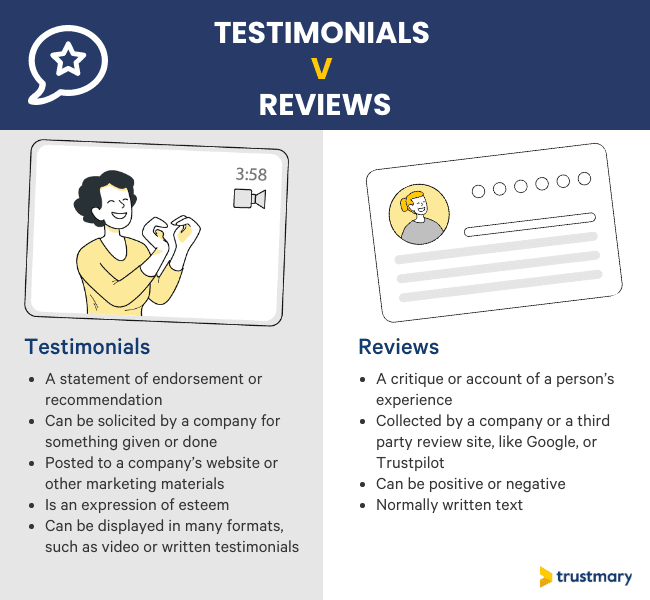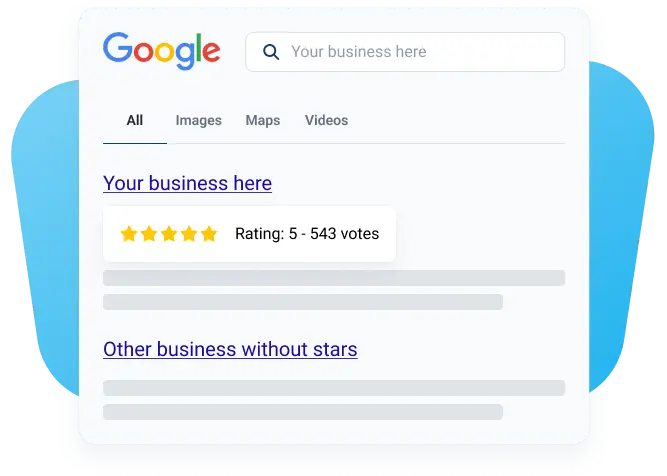Testimonials for Website – Typical Pain Points


Testimonials, reviews, social proof, UGC, customer logos, and case studies are things each company should have front and center of their website.
Even though we all know this, it’s very hard to actually implement that.
In fact, most small business owners add social proof to their websites manually – if at all.

Surprisingly, the same goes for many companies that have a person dedicated to doing marketing.
I interviewed people from multiple industries to figure out what their biggest issues are.
I’ll use the terms reviews and testimonials somewhat interchangeably, because they often mean the same thing.

Data
Collected through interviews, help a B2B writer forum, and personal network.
Thanks all for your contribution and insights!
Industries Involved in the Data
- Marketing agency
- B2C ecommerce
- SaaS
- IT company
- SEO agencies
- B2B companies
Reviews for Multilingual Sites
This hits close to home to me personally, as we operate globally. Sometimes the most fitting reviews are given in German, but I’d like to use them on all of our landing pages.
Not surprisingly, I’m not alone with this issue. For the following comment, I've removed the tool that was in use, as it's not a praising statement.
– I’ve struggled with its limited support for multi-language reviews, which isn’t ideal when you’re working with international clients. Plus, the setup can be a bit complicated and time-consuming, Brandy Hastings, SEO Strategist at Smart Sites.
This is also sometimes referred to as review syndication, but that term also means using product reviews across different ecommerce platforms that sell a certain product.
Pricing
If you are showing reviews on your website, you’ve either built it yourself or bought a SaaS solution that charges you for using it.
This can get expensive depending on your use case, needs, and how the pricing model works.
– Another issue was their pricing structure. The plans are yearly, so we had to get locked in for another year. It didn’t work for us especially because we weren’t sure about the styles, Victor Karpenko, Founder & CEO, SEOProfy
Widgets Slow Website Down
User experience on a website is becoming increasingly important. Adding visual social proof and reviews is great content that serves users, but it becomes a problem if the widgets slow down the website.
– A key pain point we’ve encountered is excessive loading times, which can frustrate users and slow down site performance. Additionally, we’ve faced challenges with limited third-party integrations, which restricts our ability to seamlessly connect with other platforms, Brooke Webber, Head of Marketing at Ninja Patches
When built and used correctly, widgets don’t slow websites.
Even if you're in your website development era, add your customer voice with a simple widget to your old site.
It'll increase its conversion rate while you build the new and improved site.
Review Schema to Search Engines
Brandy Hastings works as an SEO Strategist at SmartSites. For her, reviews are a tool to boost trust on customers’ websites. Additionally, she’s interested in adding stars to search engines to boost click-through rates.
– Review schema adds credibility to their reviews by making them more visible and trustworthy in search results. I’ve noticed it can also give them an edge over competitors. While it’s a bit technical to set up, the benefits make it worth the effort, Hastings says.

Review schema markups can be complicated to build and maintain, so choosing the right tool for this is advisable to make sure it gets updated automatically after implementing it.
Did you know that some AI searches also rely on schema?
Learn the basics of what AI search is to be able to optimize for AI searches.
Getting Enough Data
Wouldn’t it be fun to measure the return on investment for all actions and additions on your website?
However, people often change more than one thing on their website at once, so making reliable AB tests is impossible. Speaking of AB testing, one needs to have enough volume to make reliable tests. That means getting huge numbers of responses.
If reviews are used to improve customer experience or make decisions on product development, it’s even more important to make sure that you have enough data.
– Customer reviews play a massive role in refining our mobile apps. Sometimes, the stats could be more complex. It's easier to promptly identify what's truly beneficial by sifting through excess metadata, Simon Lee, CEO at Glance.
Before making changes, make sure it’s an actual problem for users and not just a handful of people. If someone is complaining about a core feature, it might be that they aren’t your ideal customer in the first place. Maybe they use your software in a way it’s not designed to be used.
Constantly measuring customer satisfaction and asking for reviews is a great tool, but it needs to be combined with rich customer data.
Hence, defining your feedback points to match your customer journey and the emotions experienced should be mandatory for anyone wanting to gather customer data.
Manual Work Is Time-Consuming
If you opt for DYIng a review or testimonial widget, chances are that it takes up manual effort to update the content.
That time is away from other tasks that cannot be automated.
– We use custom code to include reviews from third party review sites (such as Capterra which are super important for decision making in our industry) onto our website and display them there. The main pain point with this is that there is no automatic synchronization, but it has to be done manually, says Hanna Feltges, Growth Marketer at Niceboard.
Similarly to Feltges, Merrill also says he updates Zibtek’s testimonials manually. However, he didn’t see it as a negative thing, but an added layer of trust, because everything is kept updated regularly by hand.
– We currently embed reviews manually on our website. The main challenges are keeping the content current and making sure the reviews are authentic. This process requires regular updates and oversight to maintain credibility, which can be time-consuming but essential for trust, says Cache Merrill, CTO at Zibtek.
Need to Filter Reviews
One of the most common issue is that not all reviews work in all contexts.
For instance, the feedback you get for your chat support isn’t the best selling-point for your full-suite solution.
If your company has done great roof renovations, the reviews on them aren’t relatable to someone considering buying a window replacement from you.
I spoke about this with Kyösti Raiskinmäki from WDS in more detail in when we talked about challenges in construction industry marketing. One major issue Raiskinmäki sees is that the location of the reviewer plays a role as well in how relatable the review is.
I must underline that I’m not talking about review gating or soliciting only positive reviews from customers. That’s a no-no strategy, and the FTC ruled a ban on such actions. I’m talking about providing customers with relevant information.
You wouldn’t show all product reviews for all products, but only place the product reviews for that given product next to it, right?
– Overall, a more precise filtering system by keywords, stars or dates will help to easily moderate reviews and only show relevant reviews to our website, Sam Speller, CEO at Kenko Tea
Speller has a great point, as consumers want to see recent reviews. If a review is older than a few months, it’ll lose some of its power.
Widgets Are Clunky
Choosing the right tool to show reviews and testimonials can be challenging for brands that have a visual and modern brand.
This is a problem for big and small brands as well as agencies helping customers build their websites. In fact, almost everyone mentioned the outlook of the widget as one pain point in adding reviews and testimonials to their website. Updating a website is rarely on the top of the priority list for business owners, if they need to do that themselves.
– The solution works pretty well, but I’ve run into some issues with it not playing nicely with certain themes, Brandy Hastings, SEO Strategist at Smart Sites.
– Another small hurdle is customizing the review widget to match our brand—it’s not impossible, but it does take a bit of extra work to get it looking just right, especially if you don’t have a developer handy, Peter Lewis, Head of Growth at Webstreet.
Lack of customization is a huge deal-breaker for many users. I’ve omitted the names of the software people referred to from the next quotes.
– The review widgets can be a little limiting in terms of customization. While there are some predesigned templates, we found it difficult to tweak the widget’s layout to perfectly suit the look and feel of our website. A bit more flexibility with colors, fonts, and some tinkering with the layout would help in this regard, Sam Speller, CEO at Kenko Tea
– Tools often lack customization options, which hampers the seamless integration with the existing website style, Andrea Abbondanza, CEO at SEO for Restaurants.
– What bugged us was the look of it. The layouts and styles felt a bit outdated. We're trying to keep our website looking fresh and modern, and the designs just weren't cutting it. We wanted something that would make our reviews pop and fit in with our site's overall style, Victor Karpenko, Founder & CEO, SEOProfy
Authenticity of Reviews
FTC banned fake reviews in 2024, but that doesn’t mean fake reviews would magically disappear from the world.
All companies want to show reviews and testimonials that look and feel authentic, trustworthy and relatable. It’s a struggle to build trust. AI makes it too easy for anyone to create fake reviews, and buying Google reviews still gets thousands of searches per month globally.
If potential customers start doubting the legitimacy of your testimonials, you’re already in trouble. Merrill is putting a lot of effort into only using testimonials on their website that look authentic.
– We’re being very picky and as specific as possible with our reviews on our website. When we import reviews, for example from Google, we always link back to the original, so anyone can verify that this review was left by a real person. It adds to the credibility of the review if the same person has reviewed other businesses as well, Cache Merrill, CTO at Zibtek describes.
Taking a critical look at your testimonials page can help you improve the authenticity of your reviews.
What to Consider
- Would you trust similar reviews on someone else’s site?
- How are the names and logos shown
- Is the date of review added?
Ideal Review Process
When it comes to testimonials and reviews, there isn’t a one-size-fits-all approach. I've written about the pain points in business about collecting reviews that goes deeper into this area.
Here are some ideas of how businesses I interviewed would like to get reviews:
– The integration with CMS in use has to be quick and seamless, allowing us to begin collecting verified customer reviews almost immediately. This feature was particularly valuable because it meant that all the reviews were automatically displayed on the product and category pages, giving our customers easy access to feedback from others. In just a few weeks, we managed to collect over 100 reviews, which was an excellent result for us, says Gemma-Whitaker from Whitakers Chocolates
And a more idealistic approach for the restaurant owners and marketers by Andrea Abbodanza, CEO at SEO4Reustarants,
– There would be a blend of technology that is both customer-centric and business-friendly, transparent, and efficient, Abbodanza says.
Features of Ideal Review Process
- Ease of Giving Reviews: This could be accomplished through a popup widget on their smartphone after they've finished their meal, supported by the restaurant’s WiFi connection that automatically recognizes a customer’s presence.
- Instantaneous Feedback Loop: As soon as a review is submitted, the restaurant manager and staff would receive an instant notification.
- Handling Negative Reviews: Negative reviews would initiate an automated yet personalized response system, opening a direct communication channel between the customer and the restaurant owner. This would allow for immediate remediation and the opportunity to turn a poor experience into a positive one.
- Rewarding Reviewers: Every reviewer, irrespective of their review being positive or negative, would be acknowledged. They could receive loyalty points or future discounts, encouraging a constructive feedback loop without biasing the content of the reviews.
- Review Analysis: AI-powered analytics tools would analyze the content of the reviews, providing actionable insights and trends to the restaurant owners and managers. This would help in identifying areas for improvement, as well as highlighting positive aspects that can be marketed more effectively.
- Integration with Business Websites: All these reviews would smoothly integrate into the restaurant's website and online platforms. They would match the aesthetic of the businesses' brand, be SEO-friendly, and provide a real user experience perspective to potential customers.
Other aspects mentioned included online review management, AI sentiment analysis of reviews and feedback, and review page with all reviews.
What Next?
Start with our free review collection campaign, or sign up to Trustmary to try our tool yourself. You'll be amazed to discover that using Trustmary helps you get to know your customers better and get reviews to appear in AI search.
Need More Information?
- Review Generation – How to Succeed
- Review Marketing – aka How to Leverage Your Reviews
- The Ultimate Guide for Collecting and Using Video Testimonials